Nothing on earth is without an enemy, and the same applies to ants. Ants are some of the most formidable and plentiful creatures on earth that use their huge numbers to defend themselves from small and large attackers.
These eusocial insects usually live underground in colonies. It is estimated that there are more than 12000 different ant species across the world. While humans consider ants pests, they are a nutritious and delicious meal for many insects.
Some common animals that eat ants are:
- Other ants (some ants exclusively feed other ant species)
- Other insects (Beetles, Wasps, Butterflies, Antlions, etc.)
- Snails
- Birds
- Snakes
- Frogs and other amphibians
- Small mammals such as squirrels
- Spiders and other Arachnids
- Centipedes and Millipedes
Ants comprise a significant source of nourishment for many animals, especially insects, constituting one of the natural ways of controlling ant populations. In the following sections, you can read more about these animals and the unusual ways they feed on ants. It is an interesting read. Let’s start!
What Do Ants Eat?
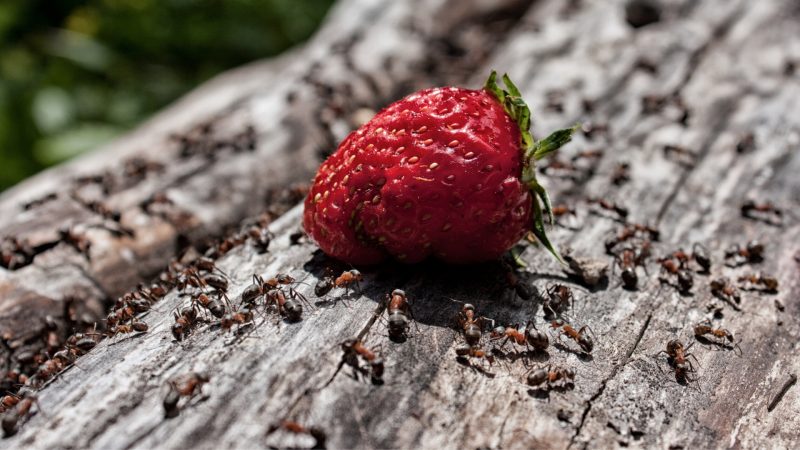
Ants eat various foods, from consuming other ant species to eating everything in our kitchen. Most ant species are omnivorous and thus ingest nectar, seeds, and invertebrates.
Some ants, like army ants, are carnivorous. As such, they prey on small lizards, spiders, and worms, while other ants feed primarily on the fungus.
As you can see, quite a few animals feed on ants. One strange thing is that even some ants can eat other ants. Nature can sometimes look so cruel, but that is normal for ants.
Do not use other insects to get rid of your ant infestation problems. This will not solve anything; you can just replace one pest infestation with the other.
Related: What Do Ants Eat? | Ant Feeding Habits
Ant Predators: List of Insects That Eat Ants
Ant-Mugging Flies (Milichia Patrizii)
As their name implies, ant-mugging flies tend to wait for ants and rob them of food. They use their weird clamp-like antennae to hold ants tightly, making it easy to fulfill their mission. By using its tubular mouth, an ant-mugging fly forces the powerless ant to spit up food due to the effect of its tapping imitation.
These flies usually learn to imitate some signal used by ants to stimulate regurgitation. When the ants spit on the mouth of the mugging fly, the fly goes away with the stolen food. In cases where an ant fails to respond as expected or is attacked by many ant-mugging flies, it is also eaten.
Ant-Eating Spiders
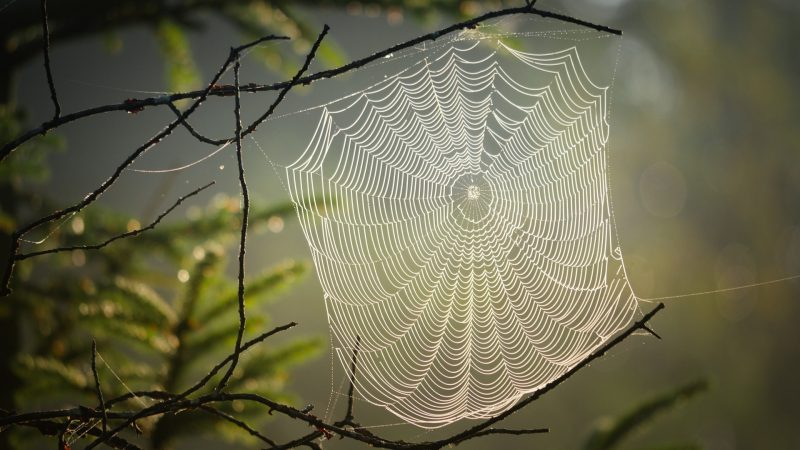
Spiders are arthropods with eight legs belonging to a class known as an arachnid. There are over 40,000 species of spiders across the world. Most of the spider species feed on ants anywhere they can locate them.
Some of these species are jumping spiders, lynx spiders, and black widow spiders. Usually, they weave webs that end up trapping ants. When the ant taps on the web, it is nabbed by the spider silk in the web. The spider feels the vibration as the ant struggles to escape and quickly goes to eat the ant that has been caught.
While some spiders make webs all around them, others do not. Instead, they lay in wait and jump quickly on any approaching ant. Once caught, the ant is killed and fed on.
Phorid Flies
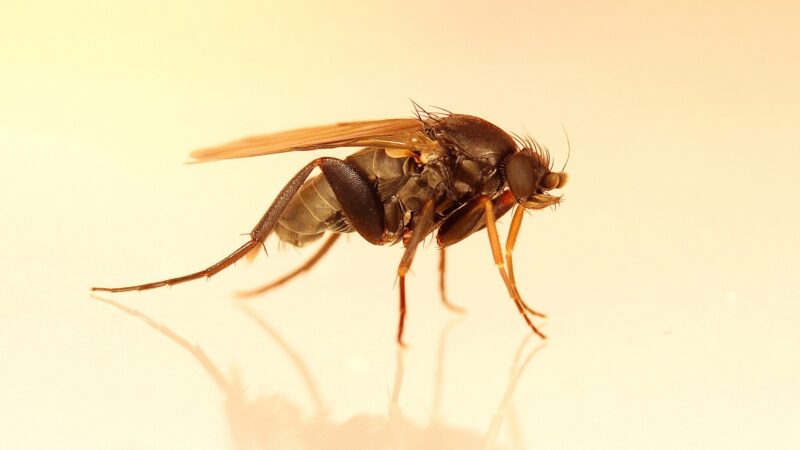
These fly species usually look like fruit flies, but their eyes are not red. Their thorax has a high arch, unlike that of the fruit flies. These insects are natural enemies of fire ants. A Phorid fly swoops down and injects its eggs into a fire ant, specifically in the thorax.
As the larva grows to become pupae, the ant’s tissues degenerate and eventually die. The young Phorid fly begins to find its way out by eating the ant inside out. Because Phorid flies prey on ants, they are used as pest control against fire ants in some parts of the world.
Antlions and Doodlebugs

Antlions are flying insects that exclusively feed on ants. As their name suggests, they are metaphorically termed hunters or destroyers because they fiercely prey on the ants.
Doodlebugs are the larva of antlions. They are called doodlebugs because they leave behind doodles on the sand when they excavate pits, which act as their hiding places for trapping passing ants. If an ant enters the pit, the doodlebug grabs and eats it.
These ant predators are nocturnal. This means they are active at night and rarely seen during the day. Usually, antlions reside in sandy and dry habitats. These places make it easy for the larvae to make pits on the ground. Nonetheless, some larvae also live under debris.
Eucharitid Wasps
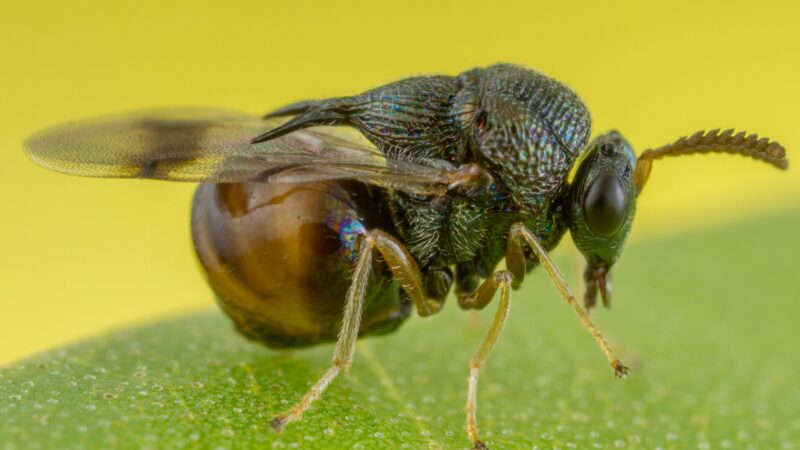
This species of wasps have a somewhat weird way of life. The female wasps lay their eggs on leaves or branches. Once the larvae emerge, they often fall on the ground. The larvae then attach themselves to the passing ants and are taken inside the colony. Once they are among ants, they find their way into the brood’s chamber, where they begin feeding on the young ants.
Since the Eucharitid wasps take on an odor similar to that of ants, they easily get away with this trickery behavior. The wasp’s larva feeds on the brood until maturity, after which they kill and eat ants.
Larva Mimic Fly
The adult female fly of this species looks like a maggot. This fly does not have wings and a huge abdomen. On the contrary, male flies have wings. These flies eat ants, including their food.
Sometimes, when they invade ant colonies, they just eat their food without harming ants. Other times, they eat anything they find on their way, including ants. The males move from one colony to another, mating with other flies.
Paussines
Paussines or ant nest beetles usually live within the nests of their prey – ants. They have a variety of acoustic, chemical, and morphological adaptations that make them well-suited for this lifestyle. Their live habits range from living freely with ants to preying on them.
Ant nest beetles find their way into ant colonies by acting like them. By distorting ants’ communication system, they not only live among ants but also prey on their brood.
They have a defensive chemical, which they usually release when attacking ants. Over the years, Paussines have diversified rapidly as they respond and adapt to different types of ants.
Blue Butterfly

This beautiful butterfly preys on ants by masking its larvae with ants’ smell. In doing so, the butterfly makes ants believe the brood is theirs. Consequently, the ants carry it to their nests for care. The larvae mimic the sounds and scent of the queen ant, and because of that, they are accorded royal treatment in the colony.
The ants feed the larvae making them grow very fast. These butterflies live in ant nests for up to 11 months. During this period, they continue to feed on ant grubs. In the end, they kill ants in large quantities and feed on them.
Bombardier Beetle
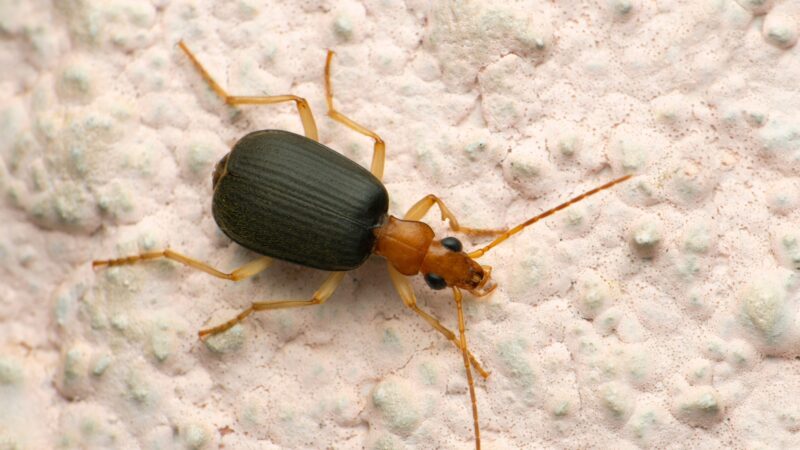
Ants make up a significant portion of this predatory beetle’s food. Unlike other insects that trick ants into feeding on them, Bombardier beetle storms ants’ territory and gobble them. These predators use their legs to kick any ant that stands in their way.
As they feed on ants, these beetles extract some formic acid from them and use it to defend themselves from their predators. When threatened, the Bombardier beetle sprays the acid into the eyes of the attacker.
Moth Butterfly

This butterfly species is found in some parts of the world, including South Asia, Southeast Asia, and Australia. Like some predators on this list, the moth butterflies’ larva feed on ant larvae. However, they find their way into ants’ nests and eat the brood in a different style.
Female moth butterflies lay their eggs mainly in the nests of tree ants. When their larva comes out, it appears like an oval, flat slug with a heavy and hard outer shell. This makes it impossible for soldier ants to flip it over or bite it. Thus, the larva can freely feed on young ants until it becomes a butterfly.
Other Ants
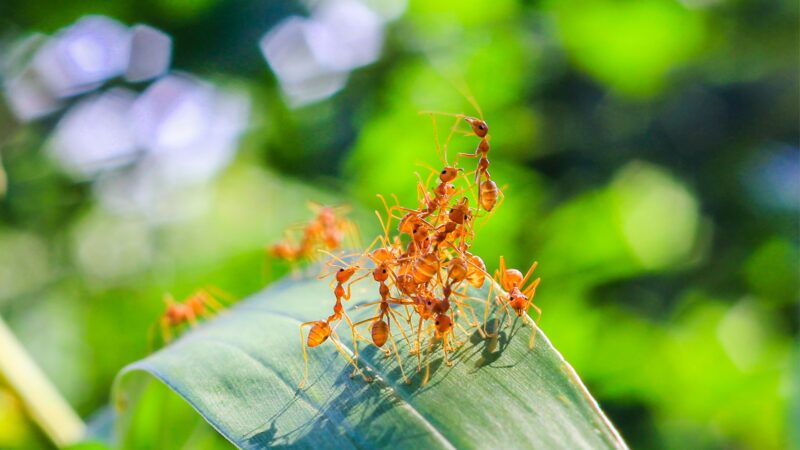
Astonishingly, some species of ants are enemies of other ants. Different colonies and species of ants are in constant rivalry with one another. As each species tries to outdo the other, some ants enslave, raid, harass, or even kill others.
Other than that, some ants eliminate others through their parasitic habits. For instance, the queen of Solenopsis Daguerrei ants does not bother to make her colony. Instead, she invades other ant nests and incapacitates and sterilizes their queens.
They are also known to steal the food of other ants. Shockingly, the victim ants do not realize the imposter queen. They continue to take care of the eggs of the parasitic queen. Eventually, when the eggs mature, they carry on with parasitic behavior.
Do Ants Defend Themselves Against Danger?
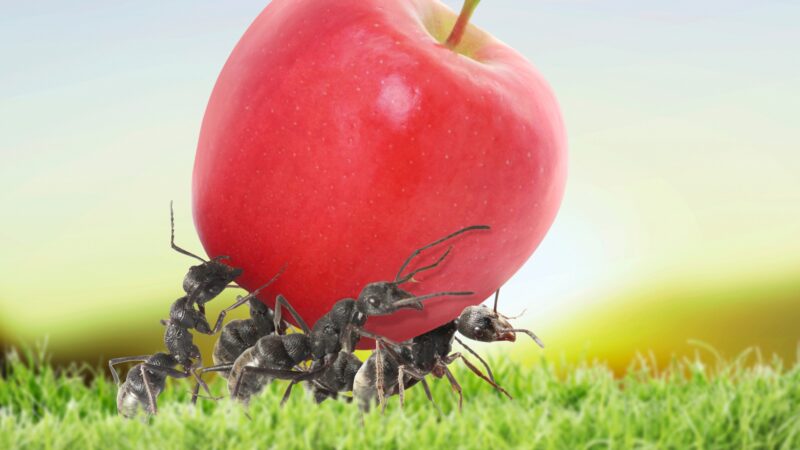
Ants signal danger through chemical warnings. They communicate continually using pheromones and chemicals. This happens either by leaving scent trails on their pathways or touching antennae.
When a predator approaches, ants release pheromones that alert other ants to offer help. In response, they rally to the defense of those in danger. Based on the type of danger or predator, ants respond in different ways, including stinging, swarming, or using their mandibles to fight.
List of Sources
Quigley T., (2015), Spies Among Ants, Arizona State University
Ant Food Web, Harvard University’s Faculty of Arts & Sciences
Parker J., Myrmecophily in beetles (Coleoptera): evolutionary patterns and biological mechanisms, Department of Genetics and Development, Columbia University
Jacobs S., Phorid flies, Pennsylvania State University
Komatsu T., & Itino T. (2014), Moth caterpillar solicits for homopteran honeydew, Department of Biology, Faculty of Science, Shinshu University \
- How to Get Rid of Copperheads | Practical Guide - August 27, 2023
- How to Get Rid of Corn Snakes | What Makes Them Aggressive? - August 27, 2023
- How to Get Rid of Alligators | Safety Measures and Removal Methods - July 16, 2023
